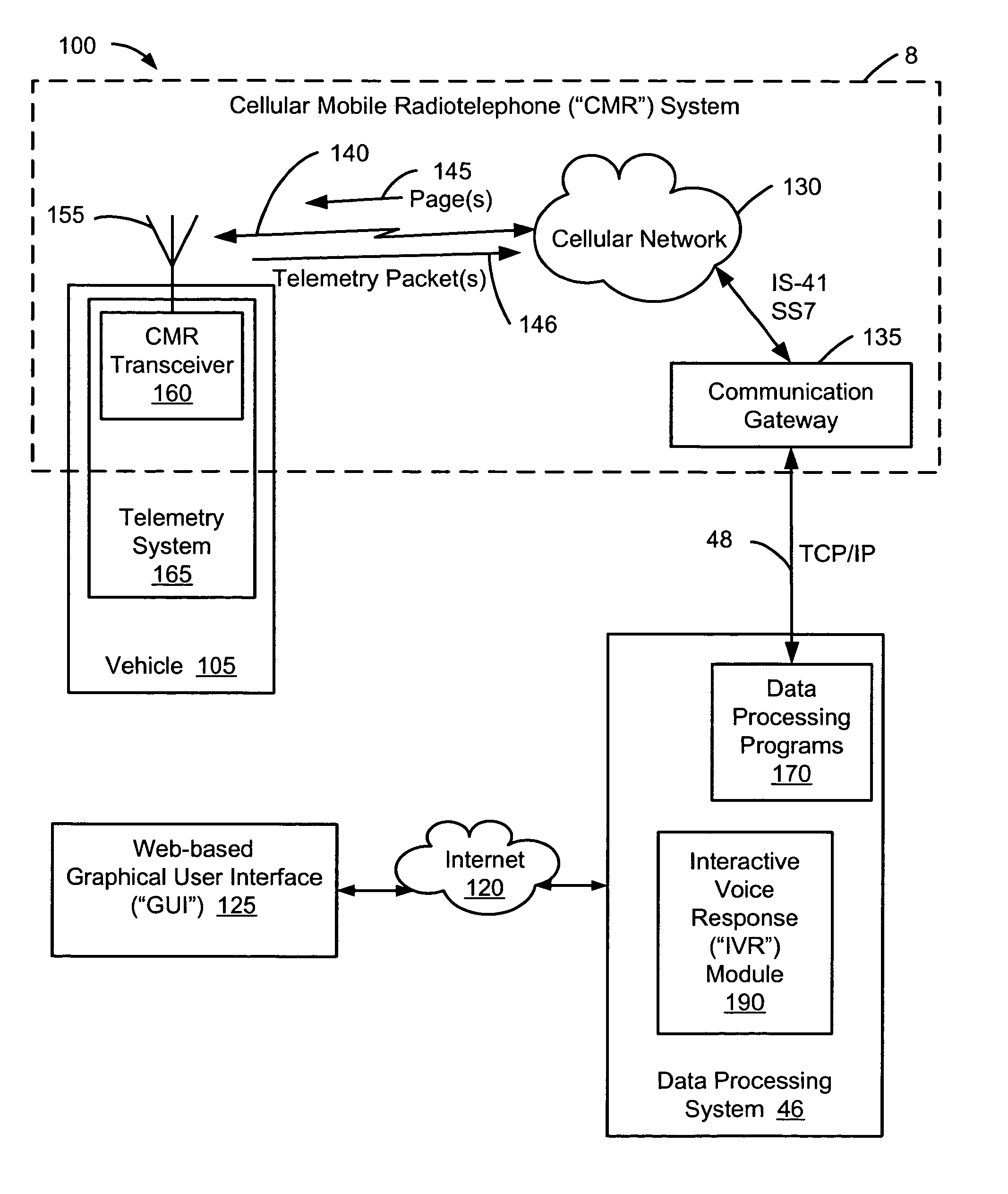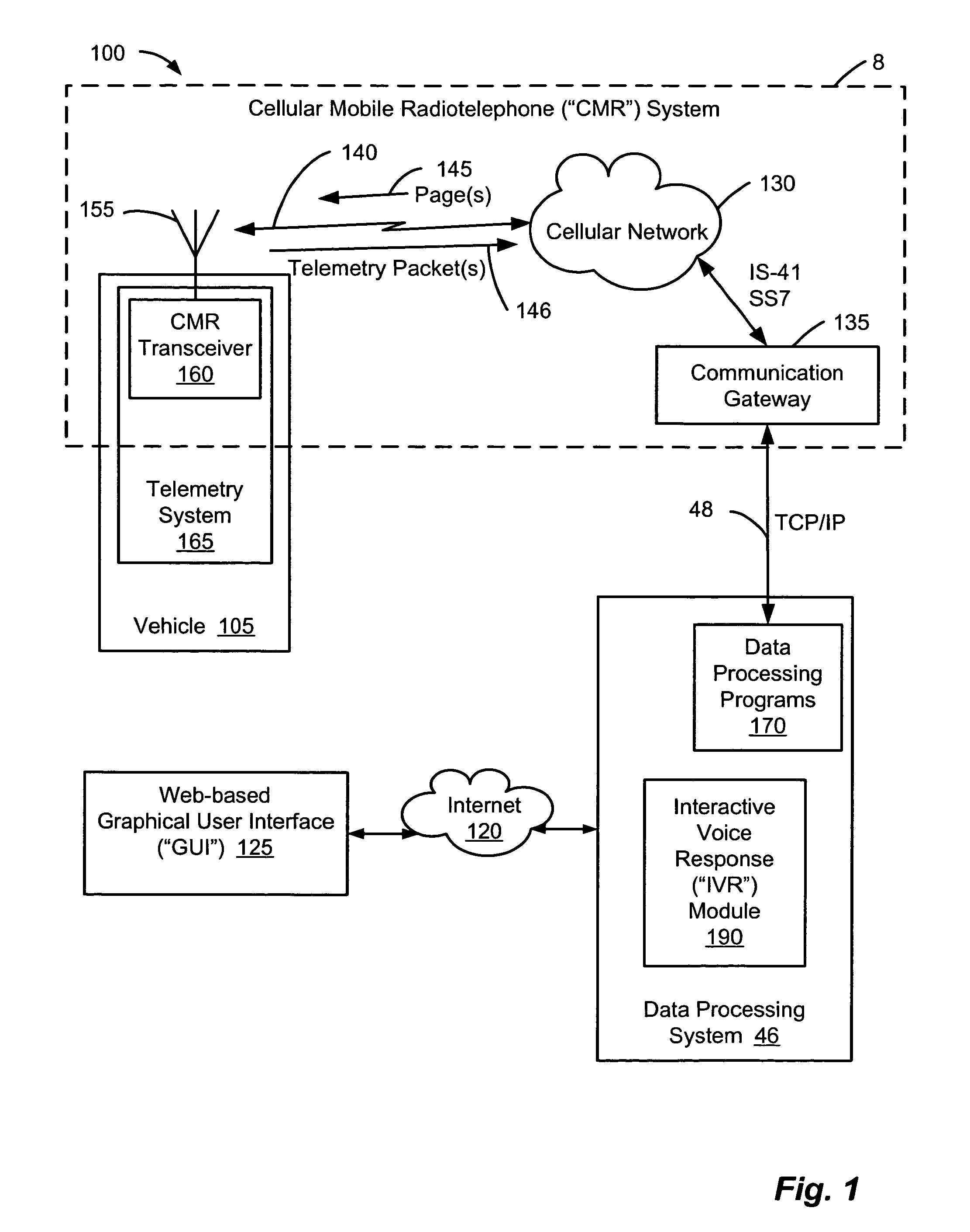Method and system for remote interaction with a vehicle via wireless communication
- Summary
- Abstract
- Description
- Claims
- Application Information
AI Technical Summary
Benefits of technology
Problems solved by technology
Method used
Image
Examples
Embodiment Construction
[0046]Exemplary embodiments of the present invention can communicate data, such as bidirectional telemetry messages comprising sensor data or commands, using a plurality of overhead control channels of a wireless communication network. A method and system for communicating wireless communication will now be described more fully hereinafter with reference to FIGS. 1-8, in which embodiments of the present invention are shown. FIGS. 1 and 2 provide block diagram illustrations of an exemplary implementation of a telemetry system coupled to vehicle. FIG. 3 illustrates an exemplary cellular communication system. FIG. 4 illustrates an exemplary communication link based on cellular control channels. FIGS. 5-8 illustrate flowcharts for exemplary processes involving wireless communication in a vehicle telemetry application. FIG. 9 illustrates an exemplary microprocessor system comprising software modules. FIGS. 10-13 illustrate flowcharts for exemplary processes for conserving power consumpti...
PUM
 Login to View More
Login to View More Abstract
Description
Claims
Application Information
 Login to View More
Login to View More - R&D
- Intellectual Property
- Life Sciences
- Materials
- Tech Scout
- Unparalleled Data Quality
- Higher Quality Content
- 60% Fewer Hallucinations
Browse by: Latest US Patents, China's latest patents, Technical Efficacy Thesaurus, Application Domain, Technology Topic, Popular Technical Reports.
© 2025 PatSnap. All rights reserved.Legal|Privacy policy|Modern Slavery Act Transparency Statement|Sitemap|About US| Contact US: help@patsnap.com



